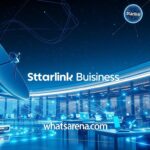The world Employee Engagement Strategy is moving fast, and so are businesses; they’re doing everything in their power to empower the end consumer. However, we fail to realise employees are the driving force. Hence, business owners, including executive board members (CEO, COO, CFO, and CTO), should ensure the best of their workers.
Remember that it’s more than just establishing a seamless communication channel and offering job benefits/bonuses. It’s allowing workers to work on their terms—at least to some degree. No, we’re talking about their tasks and assignments, but the place where they want to work from. Some prefer workplaces, while others yearn for remote jobs. And how can we forget the middle category—hybrid workers? The latter balances the scale; they attend offices and even WFH occasionally.
But do you know what’s pivotal to establishing remote and hybrid teams for the office? No! It’s devising a well-thought-out employee engagement strategy that finds the equilibrium between communication, task handling, and project completion. It’s great to see phone calls, emails, and projects flow like water. But there’s more to it; the perks that come with the worker-oriented plan are sundry.
Understanding the Landscape of Remote and Hybrid Work
Current Trends in Remote and Hybrid Work
Truly, the shift towards remote and hybrid teams has caused ripples in the traditional workplace. We’re not making a guess; it’s Gartner’s survey that says so. Around 76% of employees saw their work culture improve with hybrid work models. At the same time, the matter approach, together with remote jobs, works even better. How? Well, employees enjoy having more flexibility and can manage their work accordingly. As a result, they don’t get stressed or feel burned amid an overwhelming workload.
Challenges Faced by Remote and Hybrid Teams
Despite several benefits, certain challenges cause trepidation among remote and hybrid teams. Since remote jobs and hybrid models are often done in isolation, employees may feel disconnected from their team. And as we all know, teamwork comes better with togetherness—as a single unit—in the same room. Not to mention, team members may fail to maintain morale and meet their deadlines on time.
Furthermore, employees complain about distractions at home that affect productivity and even their overall task quality. The truth is that face-to-face interactions in workplaces are way better than those in post-COVID remote/hybrid models. Besides, the office atmosphere feels more optimistic about performing job roles better, and they foster camaraderie among coworkers.
Key Components of an Employee Engagement Strategy
Clear Communication Channels
First and foremost, establishing a strong and seamless connection between Employee Engagement Strategy is a must. Besides, if they want to work in their best shape, their voices should be heard—on call—text—email—you name it! This is one of the reasons global IT firms and organizations that work through the Internet are bringing digital tools to the table. Zoom, WhatsApp, Skype, Microsoft Teams, Google Meet, and Slack are some noteworthy examples. As far as content management is concerned, Click-up, Trello, basecamp, Jira, Asana, and Monday.com are shining examples.
Building a Strong Digital Company Culture
The next thing is to foster a healthy work environment where everyone feels safe and heard. This workplace atmosphere not only exudes at the place; it also affects remote workers. How? Companies can set the stage by curbing favoritism and nurturing inclusivity in the team. Peer recognition software can come in handy here. Some popular ones include Bonusly, Kudos, TINYpulse, Motivosity, Workhuman, and Recognise.
Immersive Onboarding Experiences
Companies should work on the catchphrase: ‘First impression is the last impression.’ And if this happens, employees start strong and finish—stronger. Therefore, whenever employers want to hire new employees, they must make sure their onboarding experience speaks volumes. Organizations must ensure their onboarding process is more than an orientation session; it showcases training materials, bonuses, workshop highlighting, and prospects.
Innovative Engagement Ideas for Remote and Hybrid Teams
Virtual Team Building Activities
It’s team building that promotes a sense of collaboration and comradeship among remote workers. Hence, companies organize various fun activities that promote engagement among employees. Puzzles, game quizzes, virtual happy hours, and official dinners are excellent ways to bond team members.
Regular One-on-One Meetings
An Employee Engagement Strategy is incomplete without interactive meetings at the workplace. Whether it’s a full-time employee, those running on the hybrid models, or remote workers, a table meeting counts. Managers and even executive board members may meet team members personally and congratulate them for their contributions.
Recognition and Rewards Systems
Hard-working employees are often disregarded, but thanks to a carefully planned employee engagement strategy that brings them to the limelight. Unquestionably, such unsung heroes deserve both homecoming and farewell parties by their respective managers/companies. Employee recognition and rewards come in all shapes and sizes, from shout-outs, certifications, performance bonus paychecks, salary increases, and promotions.
Advantages of Creating an Employee Engagement Strategy
Below are some benefits that prove to have an employee-friendly course of action work wonders:
Boosts Motivation: Engaging Employee Engagement Strategy via hassle-free work channels helps them vent their stress and feel more excited about their work.
Improves Communication: Members feel connected and taken care of all the time. Thanks to those 24/7 communication channels that help them connect with their team members.
Builds Team Spirit: People during working hours may bring in puns and lighthearted discussions that help lift team spirits—and bring team members to work in accord.
Better Productivity: The best part about an employee engagement strategy is that it keeps everybody on their toes; every worker competes with one another and remains focused.
Reduced Turnover: Companies retain their best employees as they offer flexibility during work hours.
Sadly, many enterprises often disregard a healthy work culture and, thus, pay the consequences. A flexible and friendly work policy not only improves work performance; it brings innovation, too. Employees also find peace of mind with work-life balance. Workplace guiding principles also strengthen a company’s work culture—with everybody connected on to go. The best for the last is that employees feel valued and heard, thus working harder for their respective companies’ betterment.
Conclusion
So there you have it; an effective employee engagement plan has a powerful impact. Office workers remain acquainted with their performance and effortlessly navigate through the challenges they face in due course. Thanks to round-the-clock running end-to-end channels, everyone is kept on the same page. Offices witness strong work cultures emerging from their talented staff members. Even an employee onboarding experience feels like coming in contact with friends and family.
Building an effective Employee Engagement Strategy has incremental value as companies expand their operations via remote and hybrid teams. Therefore, companies must keep up with their employee KPIs and underscore teamwork rather than fostering favoritism.



